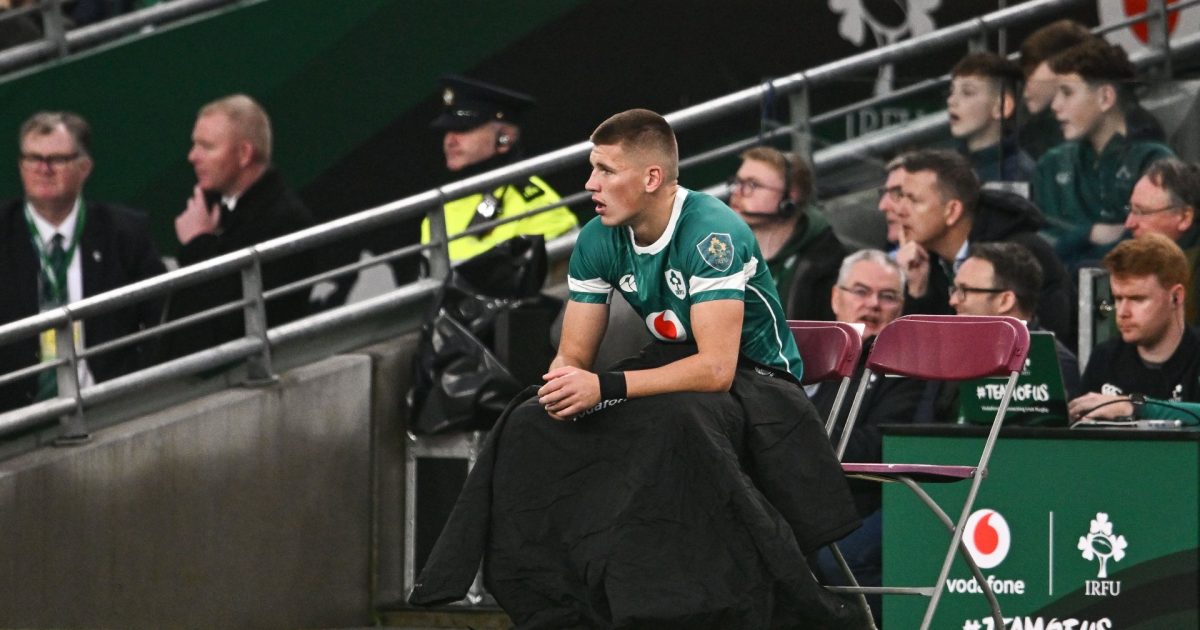The Nigel Owens verdict on 'always illegal' Sam Prendergast yellow

Retired Test referee Nigel Owens has delivered his verdict on the much-debated yellow card brandished last Saturday to Ireland’s Sam Prendergast. The 21-year-old was sin-binned by referee Hollie Davidson just eight minutes into his first international start for his shoulder-to-head contact with Fiji’s Kitione Salawa.
The incident was the reviewed in the foul play bunker and the decision was taken that the punishment should remain at a yellow card. This outcome infuriated Fiji coach Mick Byrne, who believed that Prendergast, who came back on to help Ireland to their 52-17 win, should have seen red.
Reviewing the collision on the latest edition of Whistle Watch, Owens explained why the decision was reached to leave the sanction at a yellow card, claiming there was a low degree of danger in the head contact which mitigated the punishment down from a straight red card.
However, he acknowledged why there was much debate that the ‘tackle’ wasn’t judged to be a 20-minute red card, which would have meant Prendergast would have been unable to return to the field of play but Ireland would have eventually been able to replace him and restore the match to a 15-versus-15 contest.
“A lot of you have been talking about the Prendergast shoulder-to-head tackle,” began Owens on the World Rugby video series. “Do we have direct contact with the head? Yes, we certainly do, so we have foul play. What we also have here as well is an illegal action and this is probably now what has caused a lot of the debate between whether it should be a red or should be a yellow.
“Because the actions are always illegal, so he goes in with a shoulder tucked in, there is no legal time to wrap so mitigation does not play a part, so the question all of you are asking now is does this reach the yellow card threshold? Yes, it certainly does and it goes to the bunker.
“But the big question is, why was it not a red card? So can you have a yellow card even though it’s foul play, there is no mitigation because the action is always illegal? Well, the answer is yes you can. It all comes down on the day to whether officials feel that the actual contact with the head was a high degree of danger. So if it’s a high degree of danger there is no debate whatsoever, it will be a red card.
“But because the officials felt that even though it was always illegal and there is contact with the head, they didn’t feel it was a high degree of danger and therefore that is how it remained at a yellow card. But it all comes down to do you think that the high degree of danger was enough to warrant a 20-minute red card?
“Hmmm, well a lot of you think it is and you are not wrong although others of you think it’s a low degree of danger and therefore, like the officials on the day, it remained at the yellow card.”


















